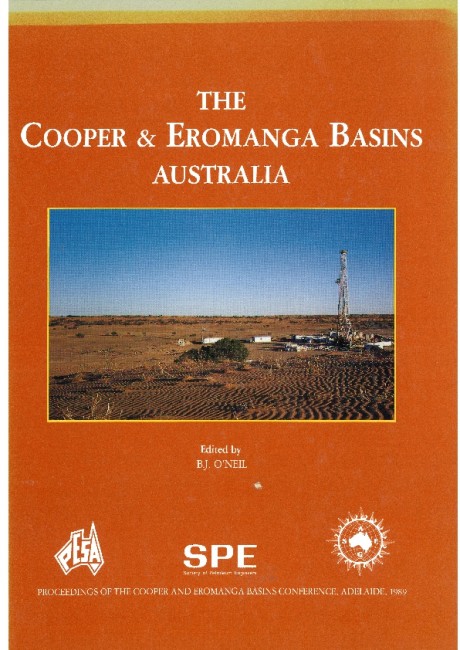Publication Name: The Cooper & Eromanga Basins Australia
Authors: Ian F. Young, L.M. Gunther and O. Dixon
Date Published: June 1989
Number of Pages: 29
Reference Type: Book Section
Abstract:
GSQ Thargomindah-3, a fully cored stratigraphic bore, was designed to investigate seismic evidence of superimposed post-Westbourne and post-Cadna-owie channelling at a location 25 km south-east of the Tookoonooka Complex (south-west Queensland). It was sited on a deeply incised, arcuate trending 'canyon' that forms one of a series of such features that appear to encircle the Complex.The well was completed in December 1987 and intersected a complete Eromanga Basin sequence from the
Early Cretaceous upper Westbourne Formation at rig limit to the Late Cretaceous Winton Formation. The lower
Wallumbilla Formation was highly atypical in that it comprised a zone, 115 m thick, of matrix supported diamictite. The diamictite contains intraformational sedimentary and subordinate metasedimentary clasts and
has been interpreted as a series of debris flows deposited during a period of active faulting in Aptian time.
The remaining Early Cretaceous units were similar to those encountered elsewhere on the northern
Thargomindah Shelf, a result inconsistent with the predrill interpretation of significant post-Westbourne erosion. However, these same units were intersected up to 140m deeper than at Toucaria-1, 2 km east, in an area where basement is essentially flat lying. Evidence of postdepositional faulting in the form of microfractures and slickensides, in addition to high angle bedding dips, support detached faulting as the likely mechanism to
reconcile both the well results and the anomalous seismic character.
Detached (listric) faulting may have commenced as early as Late Neocomian, contemporaneous with deposition of the Cadna-owie Formation, and was coincident with uplift of the Tookoonooka Complex. Consistent with the
astrobleme theory for development of the complex, faulting may be related to either gravitational collapse or
isostatic rebound following meteoritic impact.
The drilling of GSQ Thargomindah-3 was the outcome of a joint industry proposal, prepared by Delhi Petroleum
on behalf of the operators of five Authorities to Prospect in south-west Queensland. It demonstrates the benefits
of a combined approach by government and industry to assessing exploration areas that are both structurally and stratigraphically complex.


